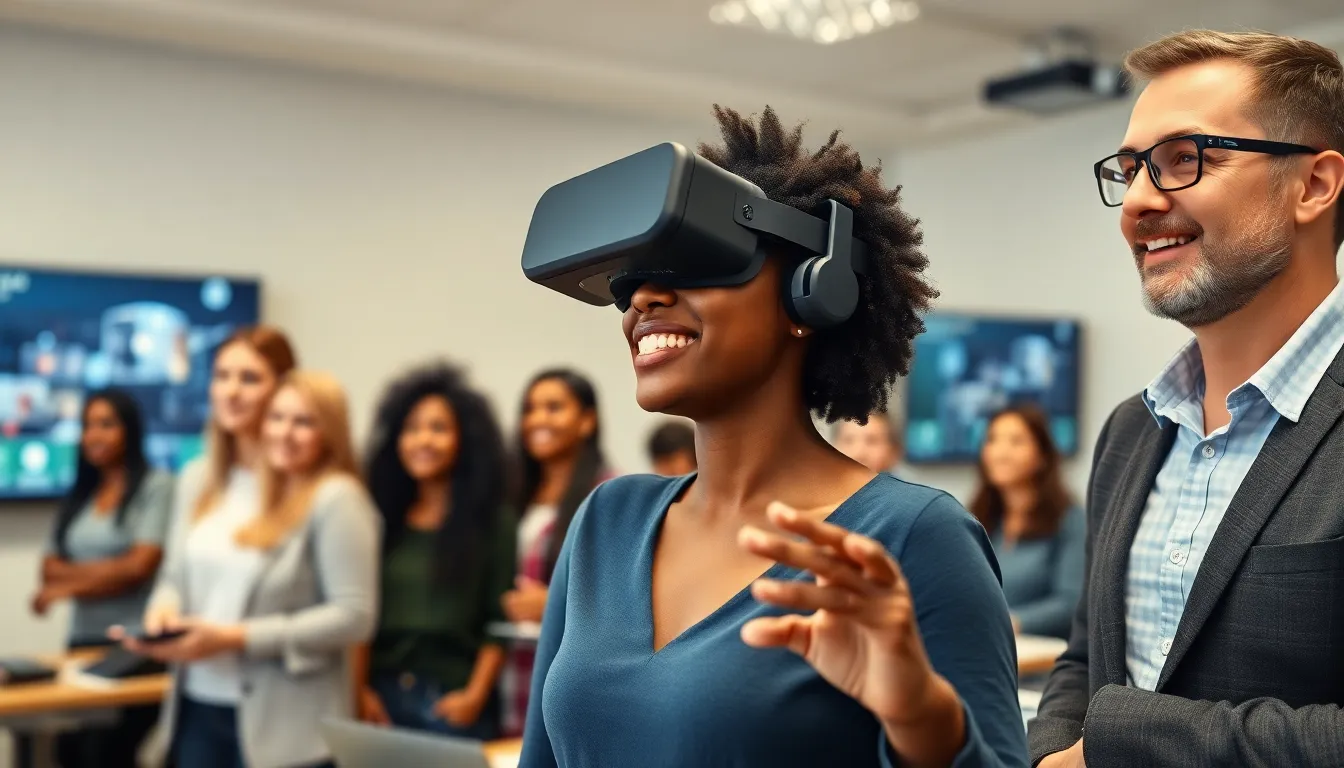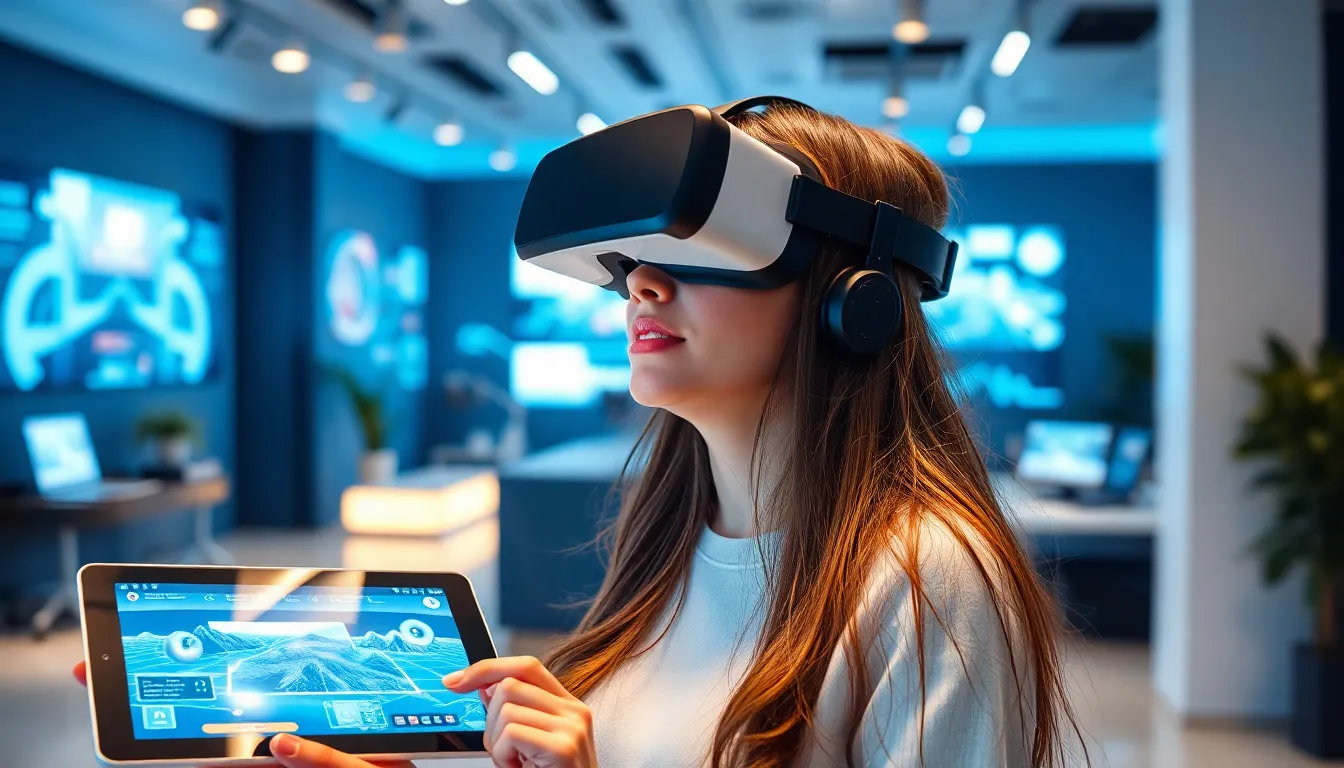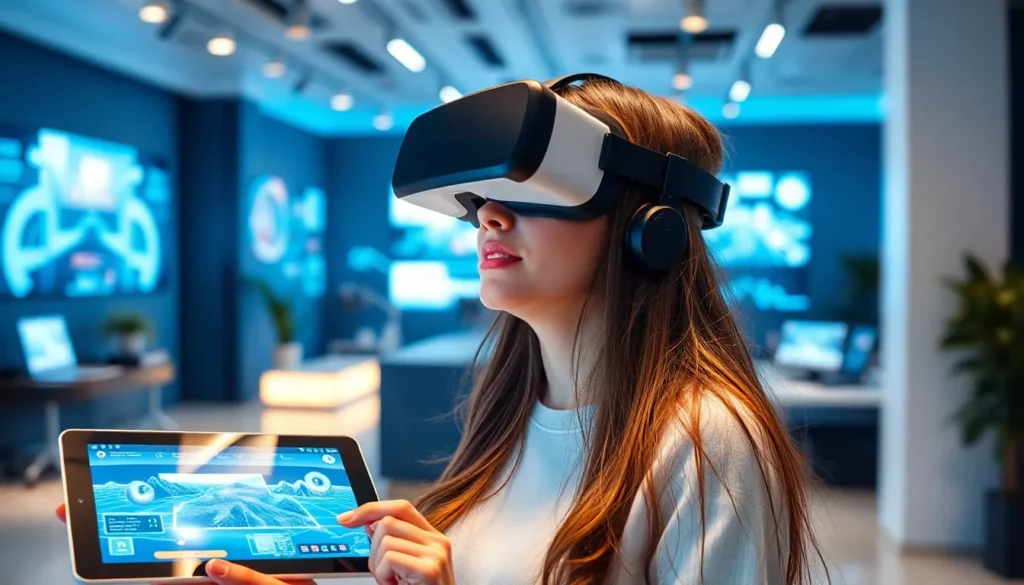Table of Contents
ToggleIn a world where reality sometimes feels a bit too… well, real, augmented and virtual reality are here to spice things up. Imagine blending the digital and physical worlds seamlessly—like peanut butter and jelly, but with a futuristic twist. AR and VR app development services are the magic wands that transform ordinary experiences into extraordinary adventures.
Overview of AR VR App Development Services
AR VR app development services create immersive experiences for various industries. These services encompass multiple stages, from concept ideation to the final deployment of applications. Companies offering these services employ a range of technologies to deliver engaging AR and VR experiences.
With AR, users interact with digital elements overlaid on the real world. For instance, AR apps can enable customers to visualize furniture in their homes before purchasing. Similarly, VR immerses users in completely virtual environments, revolutionizing training and entertainment.
Development services often include aspects such as user interface design, 3D modeling, and software integration. Each component plays a crucial role in crafting seamless experiences. Teams skilled in AR VR technology ensure compatibility across devices, enhancing user accessibility.
Industry applications for AR VR are diverse. Retailers use AR to provide virtual try-ons, improving customer interaction. Healthcare sectors implement VR for patient therapy and medical training, showcasing enhanced learning techniques. Education benefits from both technologies by making complex subjects interactive and engaging.
Project timelines depend on various factors, including the complexity of the application and client requirements. Development teams typically follow agile methodologies, enabling flexibility during the process. A continuous feedback loop helps refine applications, ensuring they meet user needs effectively.
Costs associated with AR VR app development vary based on scope and desired features. Budget considerations influence the choice of tools and technologies, impacting overall project success. Ultimately, investing in AR VR app development services delivers distinct competitive advantages in a rapidly evolving digital landscape.
Benefits of AR VR App Development

AR and VR app development services provide significant advantages across various sectors, enhancing user experiences and transforming interactions.
Enhanced User Engagement
Engaging experiences drive customer interaction. Users immersed in AR or VR environments tend to spend more time exploring content. Interactivity captivates their attention, encourages participation, and fosters brand loyalty. Retailers utilizing AR for virtual try-ons create unique shopping experiences that entice consumers. The immersive quality of VR transports users to simulated locations, making events or products more appealing. Research indicates that AR applications improve conversion rates significantly, as users visualize products in their space before purchasing. Therefore, creating engaging content is essential for businesses seeking to enhance their customer relationships.
Improved Learning Experiences
Learning benefits from AR and VR technologies. These tools facilitate interactive training sessions, enabling users to grasp complex concepts through visualization. Nurses practicing surgical procedures in VR environments gain hands-on experience without real-world risks. AR overlays enhance educational materials, allowing students to interact with digital models. Statistics show that learners retain information better in immersive environments compared to traditional methods. Schools integrating AR into their curricula witness increased student engagement and enthusiasm. Consequently, leveraging these technologies for education enhances both understanding and retention in learners.
Key Technologies Used in AR VR Development
AR and VR development harnesses a variety of cutting-edge technologies to create immersive and engaging experiences. These technologies form the foundation for applications across different industries.
AR (Augmented Reality) Technologies
AR technologies rely on several key components. Computer vision analyzes surroundings to overlay digital content seamlessly onto real-world views. Depth tracking measures distances to enhance the interaction between digital and physical objects. Sensor data processes inputs from the device’s camera and user movements, ensuring responsiveness and accuracy. Proprietary software development kits like ARKit and ARCore offer developers robust tools for application creation. Additionally, devices such as smartphones, smart glasses, and tablets serve as platforms for AR experiences, amplifying accessibility for users.
VR (Virtual Reality) Technologies
VR technologies focus on producing fully immersive environments. High-performance headsets utilize displays with high resolution to deliver clear and realistic visuals. Motion tracking technology captures users’ movements, creating a sense of presence within virtual spaces. Game engines like Unity and Unreal Engine empower developers to design intricate 3D worlds. 3D audio systems enhance soundscapes by providing spatial audio cues that immerse users more deeply. Controllers and haptic feedback devices allow interaction within these environments, heightening user engagement and realism.
The Development Process of AR VR Apps
The development process of AR and VR apps encompasses several critical stages, each vital for delivering immersive experiences.
Conceptualization and Planning
Conceptualization begins with identifying project goals and target audiences. Businesses assess how AR and VR can enhance engagement and provide valuable solutions. Gathering user requirements helps shape the app’s features. Market research plays a crucial role in understanding competitors and audience preferences. A comprehensive plan outlines timelines and resources necessary for development.
Design and Prototyping
Design and prototyping involve creating user interfaces and developing initial mockups. Designers focus on user experience, ensuring intuitive interactions. 3D modeling showcases the app’s visual elements, capturing the intended realism. Rapid prototyping allows for quick iterations based on feedback. This phase emphasizes collaboration to finalize aesthetics and functionality before moving to development.
Development and Testing
Development involves coding and integrating various features to build the app’s foundation. Engineers utilize game engines, like Unity and Unreal Engine, to create seamless interactions. Rigorous testing follows to identify bugs and usability issues, ensuring the product meets quality standards. Continuous feedback loops during testing facilitate adjustments, promoting a user-friendly application. Final deployment ensures the app operates effectively in real-world scenarios.
The future of AR and VR app development services holds immense promise for transforming various industries. By harnessing these technologies, businesses can create unforgettable experiences that captivate users and drive engagement. Whether enhancing retail shopping or revolutionizing education, the applications of AR and VR are limitless.
Investing in these services not only elevates user interaction but also fosters brand loyalty through innovative experiences. As the digital landscape continues to evolve, companies that embrace AR and VR will find themselves at the forefront of their industries. Staying ahead in this competitive market means leveraging the full potential of immersive technologies to meet and exceed user expectations.







